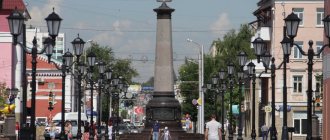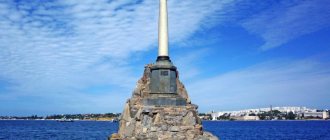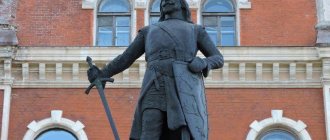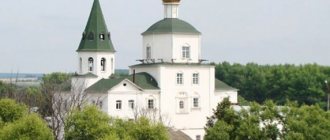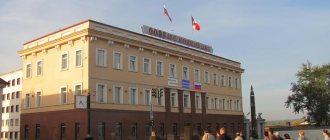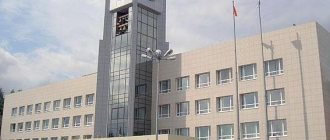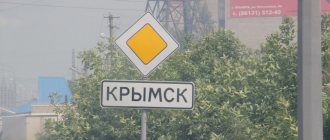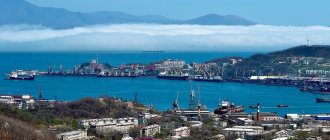Story
The first human settlements on the territory of Bor appeared 2-3 thousand years BC. Archaeologists not only established the sites of Neolithic settlements on the territory of Bor, but at the same time, while examining the dunes on the Moss Mountains, they discovered fragments of pottery dating back to the Early Iron Age. Archaeological excavations and chronicle materials indicate that Finno-Ugric tribes (in particular, the Meshchera) lived along the banks of the Vezloma River. The name of this river literally means “river flowing through the lake.”
At the place where the Vezloma River flows into the Volga, a group of buildings was formed - the Vezlomskaya, Kopytovskaya and Nikolskaya settlements, considered the ancestral home of Bor. For various reasons, the settlements Vezlomskaya and Kopytovskaya gradually moved to Nikolsko-Borovskaya, which was never flooded with spring water and which, due to its advantageous location, “acquired primary importance among the three settlements” and in all documents began to be called Borovskaya. In the 14th century, the settlement of Borovskaya, located at the beginning of the Trans-Volga trade road, transformed into a large settlement - the village of Bor, surrounded by dense, sometimes impenetrable forest.
Residents of the Trans-Volga village and its environs led different lifestyles: some hunted and fished; others were engaged in various crafts: carpentry, excellent use of carpentry tools and making various items of peasant household utensils (carved cabinets, slides, ladles, salt shakers), weaving bast shoes, burning charcoal, weaving coolies and matting from bast; still others (Old Believers-schismatics) lived off the alms of their benefactors. There were also forest dwellers who lived without power and law, engaging in robbery and robbery.
The beginning of the 17th century is associated with the most intensive settlement of the territory of the future Bor region. Among the settlers were immigrants from Moscow, schismatics and participants in peasant wars under the leadership of Bolotnikov, Razin, and Pugachev were hiding in the Kerzhen forests. Fugitive serfs settled on these lands. Since 1619, the Borovsk lands were owned by different owners: the Duma clerk I. Gramotin, then (late 17th century - early 18th century) these were palace sovereign lands, i.e. property of the king's family. At the very end of the 17th century, the Borovsk lands were owned by Major General A.A. Borozdina, and since 1799, the Bor society had to deal with the guardians of Borozdina’s children.
The serfdom of the Borovites lasted only nine years. In 1806, in accordance with the Highest permission of Alexander I, the peasants of the village of Bor could redeem themselves and their families for 160,230 rubles in state notes. Freedom for the residents of Bor was not easy - the ransom was difficult and long to pay.
The abolition of serfdom in Russia had a beneficial effect on the development of Bor as a large trading village. The water road - the Volga - conveniently connected it with Nizhny Novgorod. In the second half of the 19th century, Bor was a large trading village. By 1887, Bor's population was more than 1,400 inhabitants (293 households). The village had one school, a hospital, a dozen trading shops, a mill and an iron cutting plant. The center of the village was a market square with shopping arcades, warehouses, taverns, where weekly markets were noisy, and twice a year - on May 9 and September 15 - one-day fairs were held. Thousands of people from surrounding villages brought bread, butter, lard, livestock, furs, and leather for sale, purchasing fabrics, haberdashery and industrial goods from merchants.
The economy of the south and southwest of Semenovsky district, where the Borsky district is currently located, was determined primarily by handicraft industries, the most significant of which were fulling - wool processing and metalworking - the production of nails, anchors and chains.
The products of the blacksmith's trade, the development of which in the Borsky district was carried out by the former burgomasters of the landowner, sold well on a powerful market for the sale of finished products - the All-Russian Nizhny Novgorod Fair. The center of blacksmith production in the region was the so-called Krasnaya Ramen - an area that included about 19 villages, and in which in 1875 there were 497 forges, and in them - more than a thousand blacksmiths. On the outskirts of the village of Bor itself there were up to 25 forges.
Several dozen villages were engaged in fulling production in the region. Thousands of people made felt, felt, hats, felted shoes, and insoles. Sales of finished products as well as delivery of raw materials were carried out through Nizhny Novgorod and its fair.
Since ancient times, part of the population of Bor and its environs has been engaged in carting. The crossing of the Volga opposite Nizhny Novgorod dates back hundreds of years. At all times, the Borsky transport served as the “main gate” of Nizhny Novgorod to the Volga region and back. In the 19th century, its importance increased many times due to the transfer of the All-Russian Fair to the Volga capital in 1817. Up to 200 thousand people traveled back and forth through Perevoz and up to 150 thousand pounds of cargo were transported per year. All transport routes and trade flows of the Bor district went to Perevoz.
At the very end of the 19th and beginning of the 20th centuries, the Bor left bank was marked by a large population. Firstly, the neighboring Mochalny Island every year by the beginning of the fair (July 15) turned into a kind of warehouse for huge masses of all kinds of goods and, in addition to the constantly scurrying longboats, tugboats pulling barges, on the shore there was a concentration of all sorts of working people: hookmen and loaders, salesmen - traders, wholesalers-buyers, accountants, proxies and simply dubious personalities. Secondly, after the unprecedented devastating fire of 1893, which almost destroyed Bor, many laborers and artisans engaged in construction arrived.
With the development of shipping in the second half of the 19th century in Nizhny Novgorod, the transport and blacksmithing industries continued to develop on Bor. Blacksmiths mainly produced fastening materials, chains and other products for barges. In 1984, a forging-mechanical and iron-copper-foundry plant was built on Bor on Popova Griva, which supplied ship anchors, hooks and one steam engine for steamships per year. Brick factories, a sawmill, and fulling and shoemaking workshops also operated on Bor land. In 1911, at the shipyard located on the Fofanovy Mountains, which at that time represented sand dunes that were not flooded with Volga water in the spring, the longboat “Kashevar” was laid down. Thus began the birth of the Teplokhod plant. Over all the years of its existence, the word “Motor Ship” has never disappeared or changed in the name of the enterprise.
In the first years of Soviet power, the economy of the Bor region experienced some difficulties. Due to the lack of military orders, in 1922 the only large plant, the Nizhny Novgorod Motor Ship, was closed for a year. Handicraftsmen also found themselves in a difficult situation. Handicraft workshops closed due to lack of raw materials. Handicrafts, especially for the manufacture of metal products, also fell into almost complete decline.
As a result of socialist construction, during the first five-year plans, a powerful new industry was created in the Bor region. In 1923, the Krasnaya Ramen plant was founded in the village of Zavrazhnoe, which produced chains and subsequently became one of the main suppliers of its products for the whole country. In 1927, the Nizhny Novgorod-Kotelnich railway line came into operation, which connected the Nizhny Novgorod industrial region with the Urals, Siberia, the east and north of the country. During this construction, the Tolokontsevo-Mokhovye Gory railway line was built, which played a primary role in the industrialization of the entire Borsky region. In the same year, the village of Bor became a workers' settlement, which included the villages of Kononovo, Mukhino, Makarovo, and the backwater named after. K. Marx, Borsky transportation, Mokhovye Gory village. In 1928, the first transformer booth to receive electricity from Balakhna appeared on Bor.
In October 1929, a preliminary design for a future mechanized glass factory in the Mokhovy Gory was approved. The plant was intended to produce large-sized glass and triplex for the needs of the rapidly developing automotive and other heavy industries. The glass giant of the entire Soviet industry was launched on February 1, 1934. Simultaneously with the glass factory, a lumber factory was put into operation. By this period, the Bor silicate plant and the first stage of felt factory No. 6 were successfully operating in the Bor region, the reconstruction of the Teplokhod plant was underway, and the construction of a high-voltage line at the ship repair plant (the former Sobchinsky backwater) was completed. During these same years, capital construction was carried out at the Sitnikovsky peat enterprise and in Krasnaya Ramen.
From the commercial and industrial village of Bor, with production serving Volga shipping, it became the largest manufacturer of automotive glass - an inter-district specialized industrial center with a number of enterprises.
The city of Bor: history and modern status
The city of Bor received its status in 1938. Now it is the center of the urban district of the city of Bor, Nizhny Novgorod region.
The city is located on the left bank of the Volga, opposite Nizhny Novgorod. Communication with Nizhny Novgorod is carried out using two bridges and a cable car, as well as an electric train.
The population of the city as of 2021 is 78,385 people.
City `s history
The name of the city comes from the coniferous forests that are part of the taiga in the north of the region. In the city itself, a whole array of pine and spruce trees has been preserved on the Mokhovy Mountains, which are a landmark of Bor.
The village of Bor was founded in the first half of the 16th century. The scribe books mention Vezlomskaya Slobodka, Nikolsko-Borovskaya, Kopytovskaya.
Vezlomskaya and Kopytovskaya settlements were filled with water in the spring, and Borovskaya was located on a low, but not flooded, mountain ridge. Thanks to its position, Borovskaya Slobodka became the main one.
Residents of the Trans-Volga village and its environs led different lifestyles: some hunted and fished; others were engaged in various crafts: carpentry, making various items of peasant household utensils (carved cabinets, ladles, salt shakers), weaving bast shoes, burning charcoal, weaving coolies and matting from bast; still others (Old Believers-schismatics) lived off the alms of their benefactors.
In the second half of the 19th century, all the settlements united into the village of Bor. By 1887, Bor's population was more than 1,400 inhabitants (293 households). The village had one school, a hospital, a dozen trading shops, a mill and an iron cutting plant. The center of the village was a market square with shopping arcades, warehouses, taverns, where weekly markets were noisy, and twice a year - on May 9 and September 15 - one-day fairs were held.
The economy of the village was determined primarily by handicrafts, the most significant of which were fulling - wool processing, and metal crafts - the production of nails, anchors and chains.
Since ancient times, part of the population of Bor and its environs has been engaged in carting. The crossing of the Volga opposite Nizhny Novgorod dates back hundreds of years. At all times, the Borsky transport served as the “main gate” of Nizhny Novgorod to the Volga region and back. In the 19th century, its importance increased many times due to the transfer of the All-Russian Fair to the Volga capital in 1817. Up to 200 thousand people traveled back and forth through Perevoz, and up to 150 thousand pounds of cargo were transported per year. All transport routes and trade flows of the Bor district went to Perevoz.
In 1894, a forging-mechanical and iron-copper-foundry plant was built on Bor on Popova Griva, which supplied ship anchors, hooks and one steam engine for steamships per year. Brick factories, a sawmill, and fulling and shoemaking workshops also operated on Bor land. In 1911, the longboat “Kashevar” was laid down at a shipyard located on the Fofanovy Gory. Thus began the birth of the Teplokhod plant.
During the first five-year plans, a powerful new industry was created in the Bor region. In 1923, the Krasnaya Ramen plant was founded in the village of Zavrazhnoe, which produced chains and subsequently became one of the main suppliers of its products for the whole country. In 1927, the Nizhny Novgorod – Kotelnich railway line came into operation, which connected the Nizhny Novgorod industrial region with the Urals, Siberia, the east and north of the country. In the same year, the village of Bor became a working settlement, which included the villages of Kononovo, Mukhino, Makarovo, the backwater named after K. Marx, Borsky Perevoz, and the village of Mokhovye Gory.
In October 1929, a preliminary design for the future mechanized glass factory in Mokhovy Gory was approved. The glass giant of the entire Soviet industry was launched on February 1, 1934. Simultaneously with the glass factory, a lumber factory came into operation. By this period, the Bor silicate plant and the first stage of felt factory No. 6 were successfully operating in the Bor region, the Teplokhod plant was being reconstructed, and the construction of a high-voltage line at the ship repair plant (the former Sobchinsky backwater) was completed. During these same years, capital construction was carried out at the Sitnikovsky peat enterprise and in Krasnaya Ramen.
From the commercial and industrial village of Bor, with production serving Volga shipping, it became the largest manufacturer of automotive glass - an inter-district specialized industrial center with a number of large enterprises.
Bor received city status in 1938. Currently, Bor is a modern industrial and cultural center of the Nizhny Novgorod region. In 2021, the city of Bor will turn 80 years old.
Bor today
Main types of products:
polished building glass, triplex, stalinite, double glazed windows, welding electrodes, dehydrated food products, plastic plugs, polyvinyl buteral film, car batteries, cast iron and steel castings, electric welded pipes, sand-lime brick, glassware, peat briquettes, furniture, wool, felt, felted shoes , commercial equipment, lumber, bakery and confectionery products.
Important!
Language feature. It is considered the norm to say “on Bor”: I live on Bor, I’ll go to Bor.
You cannot say “in Bor”, “in Bor”. That's right: in the city of Bor, the city of Bor.
Bor
From Nizhny Novgorod
Bor can be reached by ferry.
The pier where the ferry docks is, as I already wrote, on the Nizhnevolzhskaya embankment. In fact, there is no formal pier here, just a structure for cars and people to enter the road. The road begins immediately at the end of the beautifully designed embankment. You can identify it by the line of cars and the lonely kiosk for selling tickets on the river bank. The ferry service usually opens in May and operates until around November, depending on weather conditions and water levels in the Volga River. The crossing operates daily from 07:00 to 22:00, but in spring and autumn, operating hours may vary slightly, which again depends on the water level. For example, a ferry may not load cars, but only carry passengers, or only load high-slung vehicles. This happens because the pier is poorly equipped, and if the water level in the river is too high, then the car can “peck” the ground or scratch the bumper when entering and leaving the crossing. But, in my opinion, this happens quite rarely. Both passengers on foot and passengers on bicycles will always be able to get to the crossing. The journey along it takes about 15 minutes, during which you can admire the views of the two cities, enjoy the river breeze and even feed the seagulls (there are always a lot of them nearby, so you can grab some food for them).
The ferry offers a magnificent view of the Chkalov Stairs and the Kremlin, the main attractions of Nizhny Novgorod. There are benches for passengers to sit on while swimming. In summer, 3 ferries run along the route at once to speed up work and increase passenger traffic.
The fare for the ferry crossing differs for different categories of citizens:
- if you travel on foot, the cost of a passenger ticket will be only 20 rubles, and for children under 7 years old 10 rubles.
- if by car, prices start from 230 rubles and depend on the dimensions of the car. Another 20 rubles are added here for each passenger, not counting the driver.
- on a motorcycle - from 120 rubles.
- You can bring a bicycle for 40 rubles.
If you have any questions, you can call the help desk, whose phone number is.
How to get from the pier to the city center
On the Borskaya side the ferry docks at the pier at the end of Internatsionalnaya Street. In fact, it is just a road without equipped sidewalks. It will not be difficult to climb it by car. Just be careful when turning: there are also no markings here, and some people like to drive when leaving the lane. Pedestrians will have a slightly more difficult time, since transport does not go here and you will have to walk to the city center. True, the road is not long, only a couple of kilometers, we usually cover them in 15-20 minutes, but you immediately find yourself in the very center of the city.
Cable car
The cable car is one of the most popular and my favorite way to get to Bor. The journey takes only 13 minutes and is accompanied by magnificent views of the Volga River, the panorama of the cities of Nizhny Novgorod and Bor.
The fare is 90 rubles for a one-way trip. If you plan to visit this wonderful town several times during the month or are traveling in a large group, you can purchase travel tickets for 10, 20, 30 or 48 trips. The savings are not too big, but still noticeable: for example, a pass for 10 trips costs 820 rubles, and for 48 - 3,550 rubles. Students and other preferential categories are given discounts only on travel tickets; a one-time ticket will cost them the same as for everyone else - 90 rubles. A discounted pass for 10 trips will cost only 430 rubles, almost half the standard price. Unused trips expire after 30 days (30 and 48 trips after 60 days), so reconsider whether to buy such a pass.
Travel rules
You can carry hand luggage up to 120 cm in size and weighing up to 30 kg, skis, and strollers for free. But to transport a bicycle you will have to pay extra for one place. It is also worth noting that children under 14 years of age are allowed to travel only in the presence of an adult. Although in reality this rule is not observed, in any case, I have never heard of cases where someone was not allowed onto the cable car. If you are under 14 years old and want to travel alone, then simply join other passengers, pretending that you are with them (I assume no one will object).
The cable car operates according to the following schedule:
- Monday–Thursday – from 06:45 to 21:00,
- Friday–Saturday — from 06:45 to 22:00,
- Sunday and holidays - from 09:00 to 22:00.
On Monday and Thursday, technical work is carried out on the road from 10:30 to 13:00.
For more information on the operating schedule of the cable car, please call: (831) 4-111-009.
There is free parking next to the cable car along the houses, but it is very difficult to find spaces. There is also paid guarded parking behind the fence, opposite the mosque (you will see a sign on the road). The cost of an hour here will be only 20 rubles, for a long stay there is a fixed price (around 100 rubles).
Please also note that in winter, when there is severe cold, or at other times of the year, due to storm warnings, strong winds or heavy rains, the cable car may stop operating for some time.
How to get from the station to the city center
The cable car station is located near the very center of Bor, which can be reached on foot from here (near the railway station that I described above, and then the city center).
